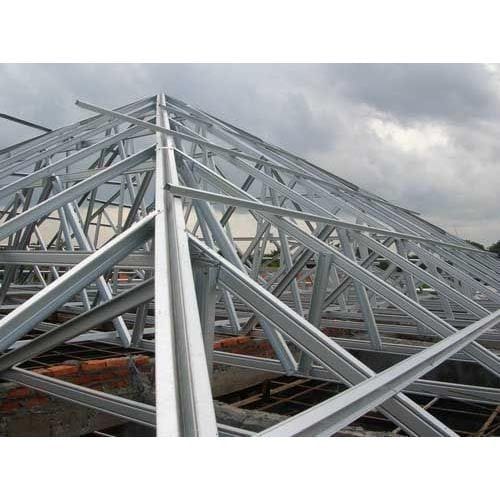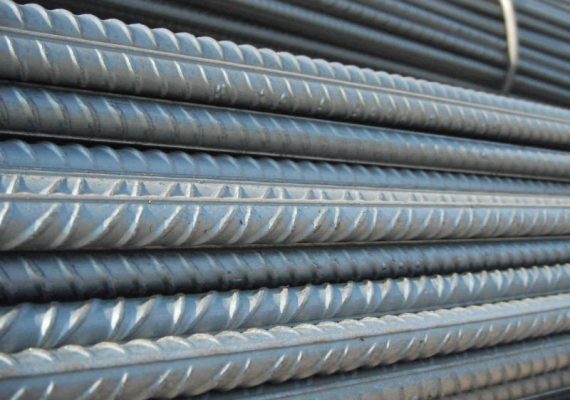Types of Steel | Carbon Steel | Alloy Steel | Stainless Steel | Properties of Steel
Types of Steel | Carbon Steel | Alloy Steel | Stainless Steel| Properties of Steel
Types of Steel
In steel work, it is often useful to group steel into four categories using the acronym CAST (Carbon, Alloy, Stainless Steel and Tool Steel) The American Iron and Steel Institute, (A. I. S. I) categorize steel into these four groups based on chemical composition.
Within each category, there are many different grades of steel that have varying physical, chemical, and environmental properties. It is the amount of carbon and the additional alloys that determine the properties of each grade.
Different types of steel can also be classified by a variety of different factors, such as steel composition, production, method, steel finishing, method, form or shape, deoxidization process, microstructure, physical strength, and heat treatment.
To identify the properties of steel, the steel industry uses two major numbering systems.
The first was developed by The American Iron and Steel Institute, (A. I. S. I) and the second by the Society of Automotive Engineers or SAE. Both systems use four-digit number codes which identify the base carbon and alloy steels. If the first digit is one that indicates carbon steel, the next digit indicates the subcategory based on particular underlying properties.
For example,
The 10XX Series indicates plain carbon steel containing 1% mag unease maximum
The 11XX series contains re-sulfurized carbon steel.
The 12XX series is re- sulfurized and re-phosphatized carbon steel.
The 15XX series contains non-resulfarised high manganese carbon series
Generally, but not always the second digit in the Siri’s indicates the concentration of the major element in percentiles. The last two digits indicate the carbon concentration of 2.1%.
Therefore 4140 indicates:
4= Molybdenum alloy steels containing
1=1% of molybdenum and
40= 0.40% of carbon.
Types of Steel
Carbon Steel.
Carbon steel can be segmented into three main categories based on the carbon content. Low carbon steel, sometimes known as mild steel, medium carbon steel, and high carbon steel.
Low Carbon Steel
Low carbon steel is one of the largest groups of carbon steel with shapes including bars, tubes, sheets, and structural beams. Carbon steel typically contains 0.4% -2.3% carbon content, depending on the desired properties. Other elements can be added or increased.
For example, withdrawing quality steel, the carbon level is kept low and aluminum is added. For structural steel, the carbon level is higher and the manganese content is increased.
Medium Carbon Steel
Medium carbon steel typically has a carbon range of 0.31% -2.6% and manganese content ranging from 0.6% to 1.65%. This makes the steel stronger than low carbon steel, but it is more difficult to form, weld, and cut medium carbon steel is often hardened and tempered.
High Carbon Steel
High carbon steel commonly notices carbon tool steel typically has a carbon range from 0.61% to 1.5%. High carbon steel is very difficult to cut, bend, and weld, once treated it becomes extremely hard and brittle.
Alloy Steel
This is the second type of steel from our acronym CAST, which stands for carbon steel, alloy steel, stainless steel, and tool steel.
Alloy steels are made by combining carbon steel with one arm or allowing elements. Adding different combinations and proportions of elements gives the steel different characteristics.
Three desired attributes include hardness, corrosion resistance, and retention of hardness and strength.
Some common allowing elements used to achieve these characteristics are chromium, which adds hardness, increase the toughness, and wear resistance.
- Cobalt is used to improve hot hardness for applications like cutting tools.
- Manganese increases surface hardness and resistance to strain hammering and shocks.
- Molybdenum, which is used to increase strength and resistance to shock and heat.
- Nickel used to increase strength and toughness while also improving corrosion resistance
- Tungsten, which adds hardness and improves grain structure while improving heat resistance.
- Vanadium increases strength, toughness, and shock resistance with improved corrosion resistance.
- Chromium vanadium is used to greatly improve tensile strength while remaining easy to bend and cut.
The most commonly used grades of alloy steel are:
- 4140 which is a chromium molybdenum steel with good strength and wear resistance, excellent toughness, and ductility with the ability to resist stress and creep at prolonged high temperatures.
- 4340 is nickel-chromium Molybdenum steel with deep hardened ability, high strength, and high fatigue to tensile ratio.
- 6150. Chromium-vanadium steel features excellent toughness, shock, and abrasion resistance.
- And finally, 8620 is nickel-chromium-molybdenum steel with good toughness and ductility with increased case hardness.
Stainless Steel.
Stainless steel typically contains between 10 and 20% chromium. It is the main alloying element and helps to make stainless steel extremely corrosion resistant.
Stainless steel is about 200 times more resistant to corrosion than mild steel. Stainless steel can be divided into five groups.
- Austenitic
- Ferritic
- Martensitic
- Duplex and
- Precipitation hardening
Austenitic Steel
Austenitic steel makes up the largest portion of the global stainless-steel market and has a wide range of applications such as food processing equipment, kitchen utensils, medical equipment.
Austenitic stainless-steel grades are, weld-able, non-magnetic, and not heat treatable. Typically, Austenitic stainless steels can be loosely divided into three groups;
- Common chromium-nickel, (300 series)
- Manganese- chromium-nickel nitrogen (200 series) and
- Specialty alloys.
Ferritic Stainless Steel
Ferritic steels contain trace amounts of nickel, between 12 and 17% chromium, less than 0.1% carbon, and others, allowing elements such as molybdenum, aluminum, or titanium.
Ferritic steels tend to have good ductility and formability but relatively poor high-temperature strength when compared to Austenitic steel.
Ferritic Stainless steels are magnetic but not heat treatable and often cost less than other stainless steels.
Some forensic grades include 405 and 409
Martensitic Stainless Steel
Martensitic steels contain 11 to 17% chromium, less than 0.4% nickel, and up to 1.2% carbon. The higher carbon content of this heat treatable steel affects forming and welding.
To obtain other useful properties and prevent cracking, preheating and post-weld heat treatment is required.
Martensitic stainless steels such as 403, 410 410 Nickel molybdenum, and 420 are magnetic and heat treatable. They are often used for dental and surgical equipment, knives and other cutting tools
Duplex Steel
Duplex steel typically contained 22 to 25% chromium and 5% nickel, along with molybdenum and nitrogen. Duplex steels have higher yield strength and greater stress, corrosion cracking to chloride than austenitic stainless steels.
Some applications include chemical plants and piping
Precipitation Hardening Steel
Precipitation Hardening steels are chromium-nickel stainless steels that also contain allowing elements such as aluminum, copper, or titanium.
These alloys allow the steel to be hardened by a solution and aging heat treatment. They can be either austenitic or Martensitic in the aged condition.
Tool Steel Tool.
Tool Steel can be divided into six groups.
- Water hardening,
- Cold working
- Shock resisting
- High speed,
- Hot working
- Special purpose
Under the A I S I and S A E systems tool steel grades are classified by the following letter codes.
- W is for water hardened steels. This grade is essentially plane high carbon steel that has been water quenched, added vanadium helps to increase the toughness
- O is for cold work steels that have been oil harden
- A is for cold work steels that have been air hard and
- D is for cold work steels that have high carbon high chromium. These code work grades typically have high hard inability and wear resistance with average toughness. Both the oil and air hardened grades reduced the distortion caused by quick water quenching and are less likely to crack. The D grade class contains approximately 10 to 13% chromium and typically retains its hardness at increased temperatures.
- S is for shock resisting steels, which are designed to resist shock at both low and high temperatures. They also have high impact toughness and relatively low abrasion resistance.
- H is for hot working steels and depending on the grade number are either chromium-based, tungsten-based malignant-based. These steels are developed to maintain strength and hardness while exposed to prolonged elevated temperatures.
- M is for high-speed Molybdenum based steels
- T is for high speed, tungsten-based steels. These high-speed grades are used for cutting tools where strength and hardness must be retained at high temperatures.
- P is for plastic mold steel, which is designed to meet the needs of zinc die casting and the special requirements of plastic injection molding die.
- L is for low alloy special purpose steels and F is for carbon tungsten-based special-purpose steels, which are water hard, noble, and more wear-resistant than w type tool steel.

